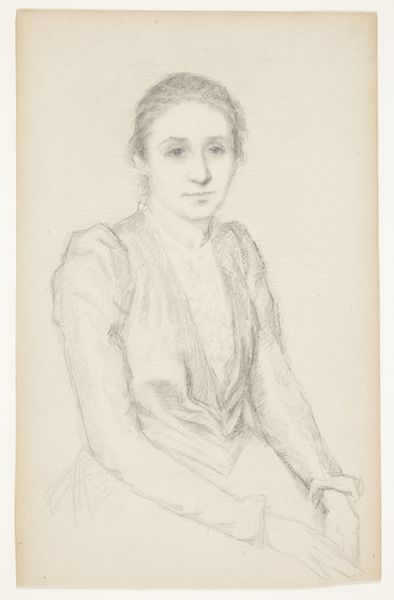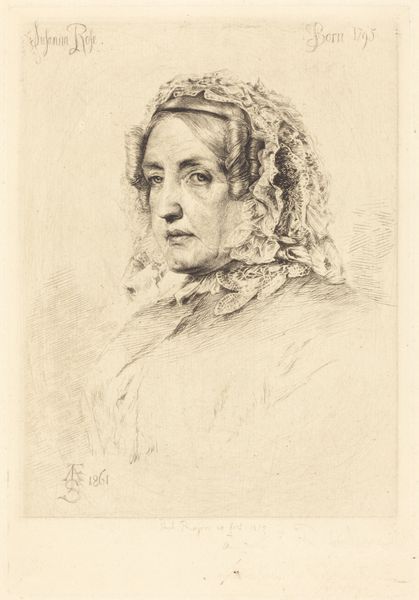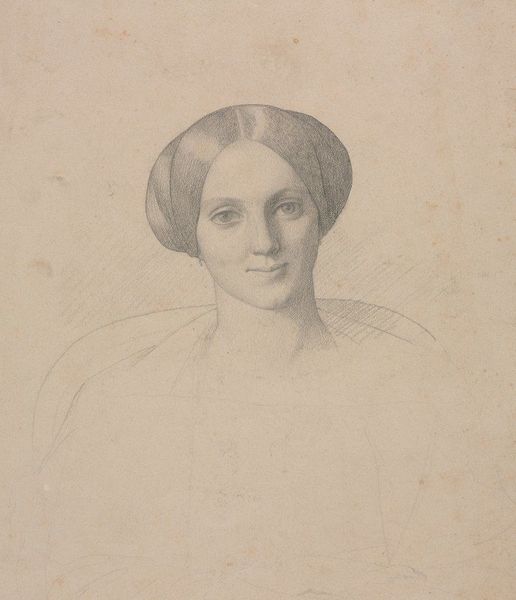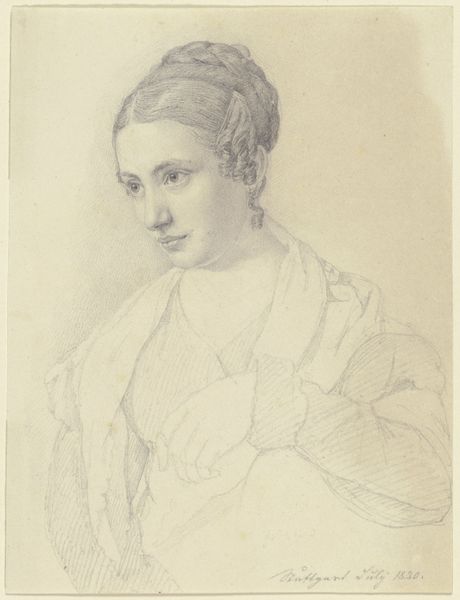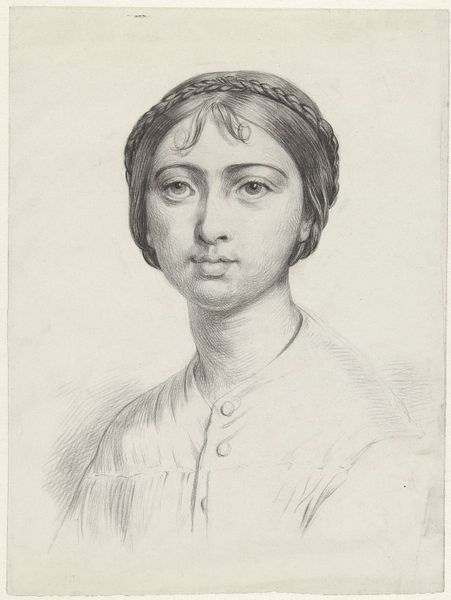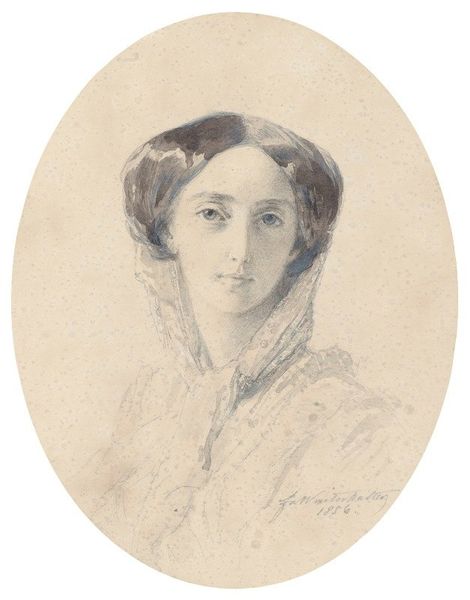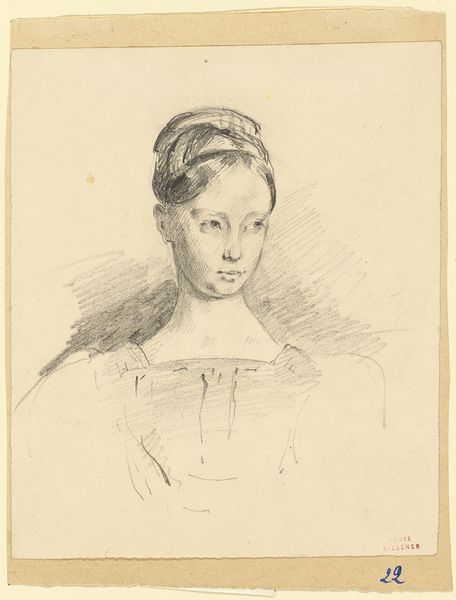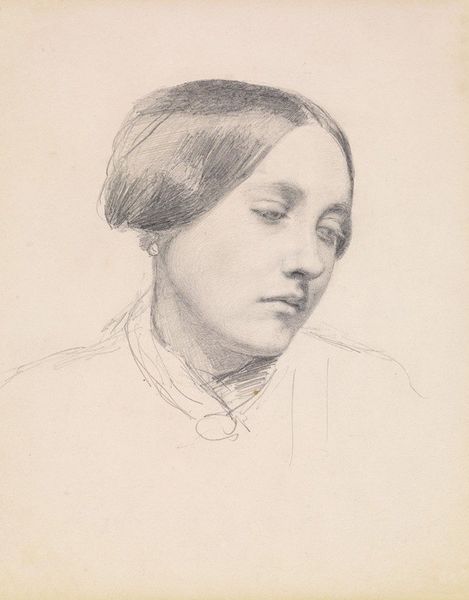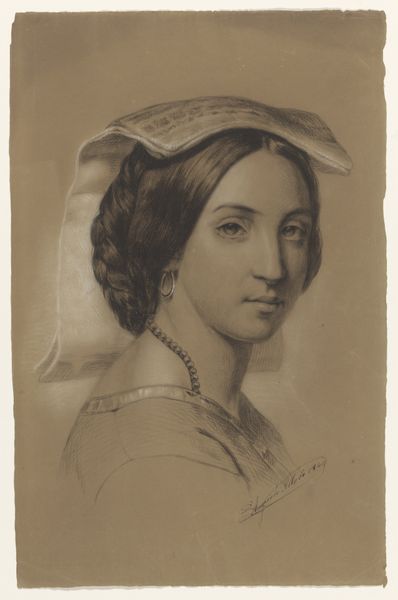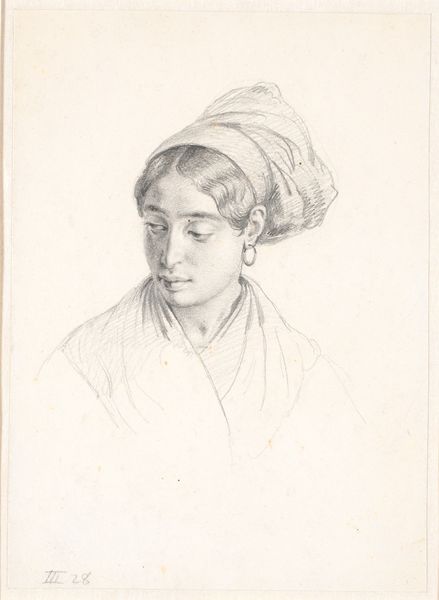
Dimensions: height 323 mm, width 241 mm
Copyright: Rijks Museum: Open Domain
Curator: We’re looking at "Head of a Girl", a pencil drawing by George Hendrik Breitner, likely created sometime between 1867 and 1923. It resides here at the Rijksmuseum. Editor: There’s something so delicate about this. Her gaze feels incredibly direct, but also somehow wistful, as though she is about to impart a very quiet secret. It feels very intimate to me. Curator: It’s interesting that you say “intimate.” Breitner, particularly known for his paintings and photographs of bustling city life, offers us this quiet portrait that showcases his skill with a medium readily available and often associated with early stages of art production and studies, challenging conventional ideas of “high art”. Consider the economic accessibility of pencils and paper versus oil paints and canvas, especially for working-class artists or students. Editor: Absolutely! And that accessibility translates directly into the mood, doesn't it? There's an immediacy, an unpretentious quality here. The slightly smudged shading around her eyes and the loose strokes that define her hair speak to the hand of the artist, capturing not just her likeness, but a fleeting moment of introspection. One almost feels the grain of the paper... Curator: Indeed. Moreover, Breitner's choice of pencil also positions this piece within a larger discourse about labor and skill. The efficiency of drawing— its speed, relative ease of correction—suggests a mode of artistic production geared towards capturing modern life's transience and it also showcases an intimacy not found in studio practices using models. Editor: Which is so fascinating when juxtaposed against his urban scenes, no? This hints at a whole other, quieter, side to his practice. Perhaps he was developing skills, and the cityscapes are explorations of the self... She does have that air of his "muse". Curator: Precisely. And to consider the materiality, graphite itself has its history within industrial development of 19th-century— reflecting broader industrial contexts, it ties even the most seemingly private moments to processes of manufacturing and consumption. Editor: So beautifully put. This has offered so much more depth to this girl. She suddenly is sitting in our current present tense, and also fully embedded in hers. Curator: Yes. Looking closer at a piece like this forces us to reconsider hierarchies around art forms.
Comments
No comments
Be the first to comment and join the conversation on the ultimate creative platform.

